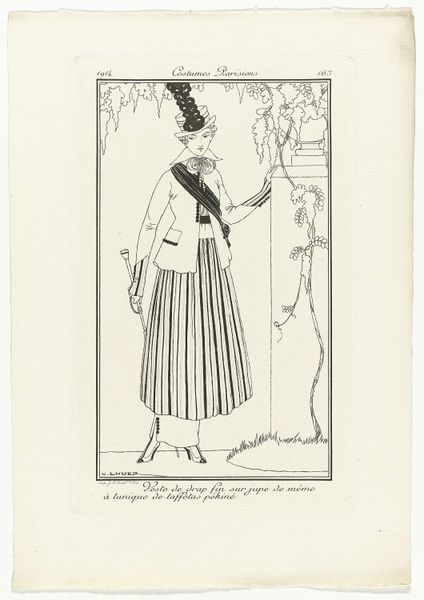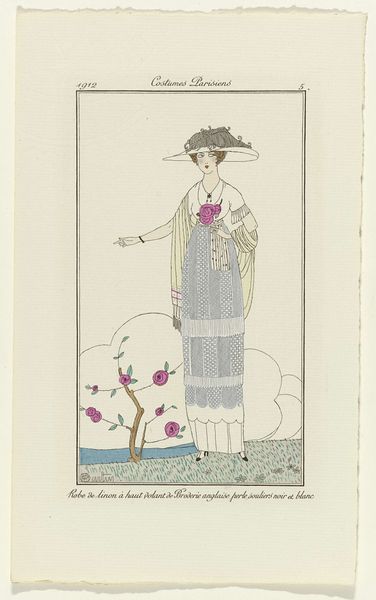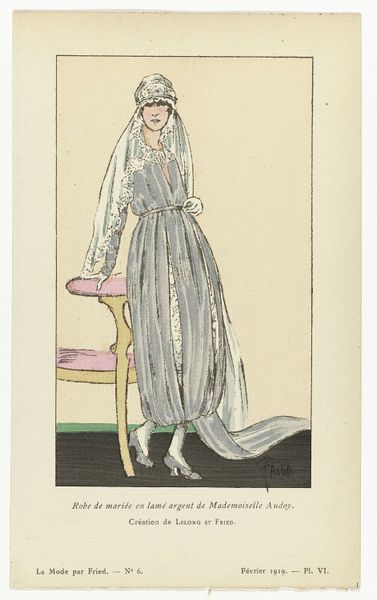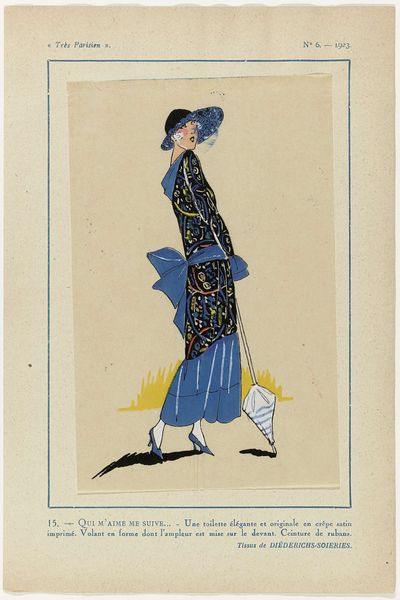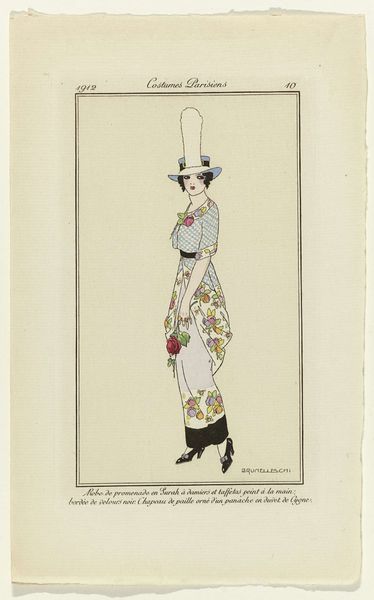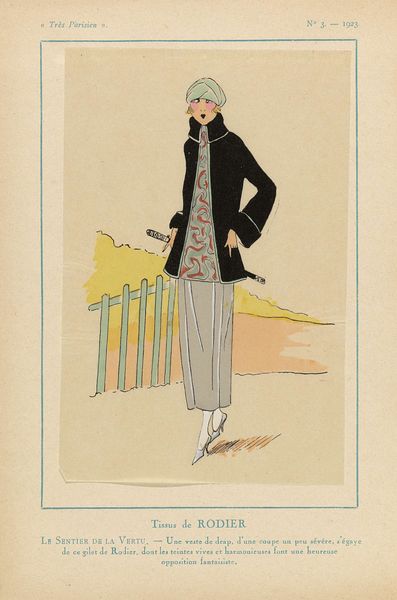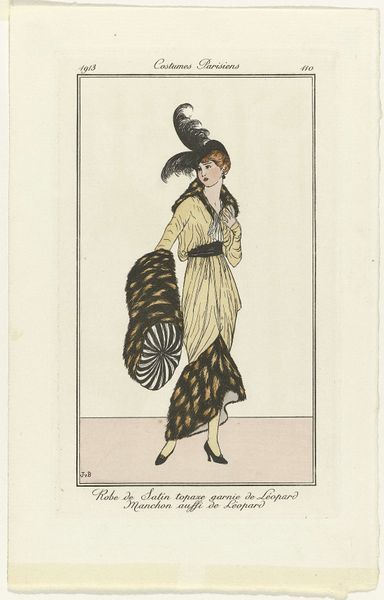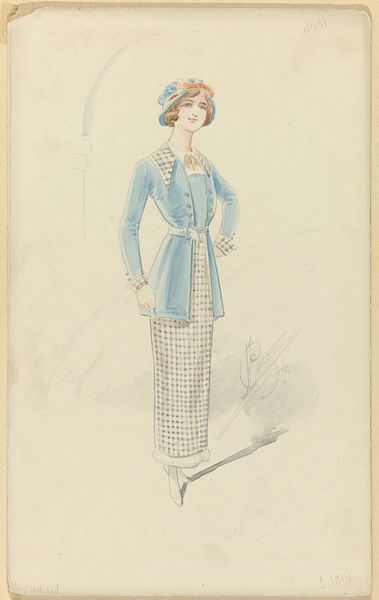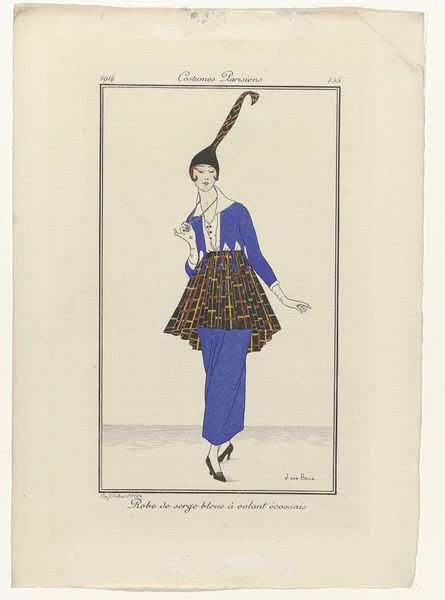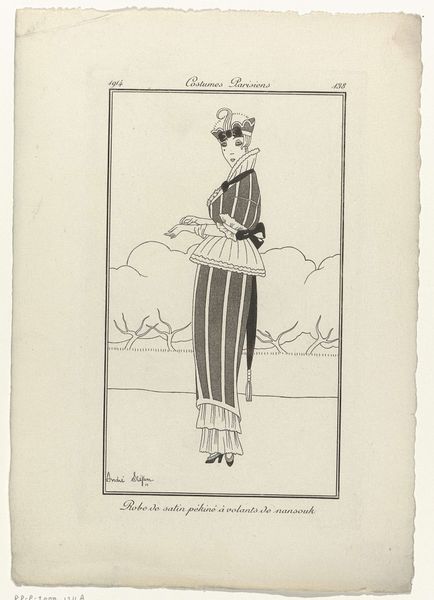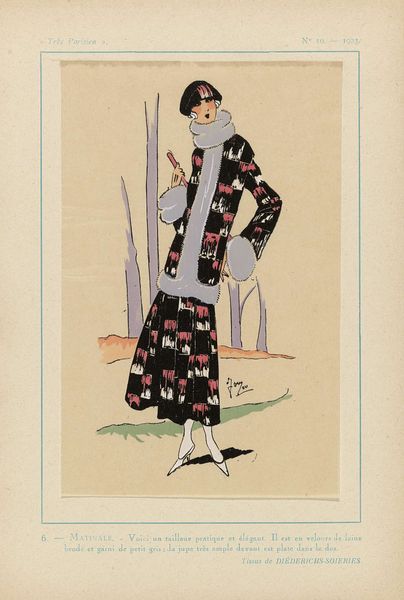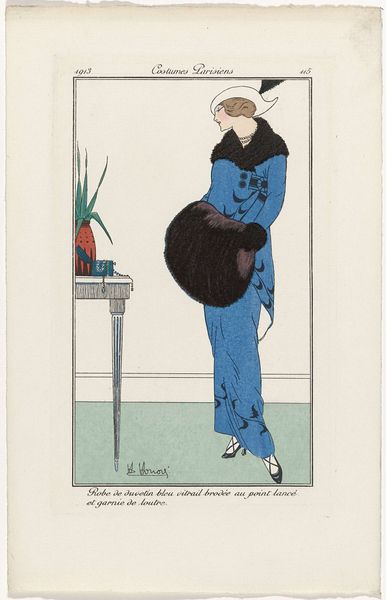
Journal des Dames et des Modes, Costumes Parisiens, 1914, No. 163 : Veste de drap (...) 1914
0:00
0:00
drawing, watercolor, pen
#
portrait
#
drawing
#
art-nouveau
#
figuration
#
watercolor
#
pen
#
watercolour illustration
#
decorative-art
#
dress
Dimensions: height 178 mm, width 109 mm
Copyright: Rijks Museum: Open Domain
Curator: This delightful image is entitled "Journal des Dames et des Modes, Costumes Parisiens, 1914, No. 163: Veste de drap..." by Victor Lhuer, and it features pen, watercolor, and drawing techniques. Editor: It has a certain elegant stiffness to it. The color palette is muted, almost melancholy, and that verticality really emphasizes the formality of the whole composition. Curator: Well, remember the "Journal des Dames" wasn't just art. It was a high-fashion periodical, aimed at wealthy consumers. The drawing style emphasizes decorative art. The social context is key: These images drove demand and shaped taste for luxurious, crafted goods during the period. Think about the cost and skill needed to make such garments in 1914. Editor: True, but structurally, observe how Lhuer balances the figure with the architectural details and the wisteria overhead. The careful repetition of stripes, in the skirt and the ribbon on the vest, generates a visual rhythm. Note, too, how the green-blue tones unify the composition, acting as an echo of the natural world that surrounds the subject. Curator: Indeed. The materials themselves tell a story. “Drap fin”, or fine cloth, implies the expense. The taffeta skirt suggests the rustling sounds of luxury, the status afforded to women who wore those materials, but the artist likely wanted to elevate their fashion craftsmanship into the realm of art. Editor: I agree. However, by paying attention to the forms and hues Lhuer utilized to create an elegant but restrained portrait, we come away with a greater perception and fondness for the figure herself. It really works at creating a delicate image. Curator: Absolutely. By understanding both the processes that went into it and its design elements, we begin to recognize a rich period in art, industry, and consumer culture. Editor: Quite. An example of the power of visual vocabulary to express time, place, and character, indeed.
Comments
No comments
Be the first to comment and join the conversation on the ultimate creative platform.
